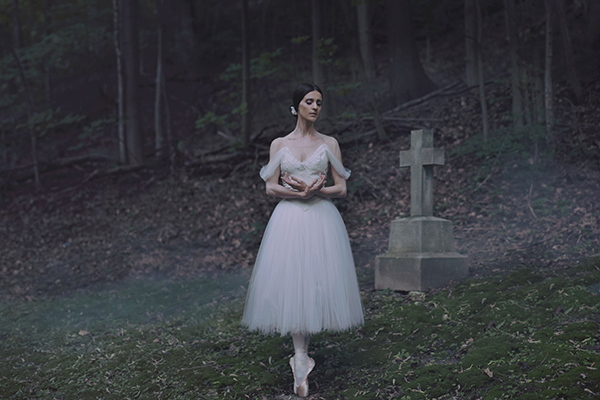Ballet
Nouvelles+
The History of Giselle
by Paula Citron
11 octobre 2019

The 18th century was the Age of Enlightenment with rationalism being its driving force. By the end of the century, reason was being swept away by the violent excesses of the French Revolution and the devastating impact of the Industrial Revolution. Enter the Romantic Era.
Romanticism replaced reason with emotion and individualism. A focus on the historical past eclipsed Greek and Roman mythology. Nature and the common man were glorified, accompanied by a fascination with the supernatural. Tragic heroes searched for an ideal they could never find. There were no more happy endings. As a work of art, the ballet Giselle embodies these Romantic characteristics.
When author and culture critic, Théophile Gautier, first saw the luminous, 20-year-old Italian ballerina, Carlotta Grisi, perform in Paris in 1841, with her gorgeous red hair and seductive violet eyes, he fell hopelessly in love. Grisi was already in a relationship with dancer/choreographer Jules Perrot who had discovered the ballerina performing in Naples when she was just 14.
Gautier was determined to create a ballet for Grisi. He found inspiration in Heinrich Heine’s book Deutschland (1835), where the German writer describes the Wilis as young women who died before their wedding day, rose from the grave at midnight, and drove men to dance themselves to death. Gautier’s other influence was Victor Hugo’s poem Fantômes, which describes a beautiful 15-year-old Spanish girl who loves to dance. After becoming too warm at a ball, she dies of a chill.
Unfortunately, Gautier didn’t know how to write a ballet scenario. He knew Act I would be about a young girl who dies, and Act II would be about the Wilis, but he couldn’t find a satisfactory storyline. While attending the opera one evening, Gautier ran into Jules-Henri Vernoy de Saint-Georges, a very experienced ballet librettist, and told him his germ of an idea. Three days later, Vernoy came back with the complete Giselle ballet outline, which they showed to Perrot, who took it to Léon Pillet, the director of the Opéra de Paris, who engaged Adolphe Adam to compose the score, which he did in a week.
Jean Coralli, premier maître de ballet, choreographed all the dances, except for Grisi’s solos, which were crafted by an uncredited Perrot. By leaving Perrot’s name off the program, Pillet didn’t have to pay him royalties. With Lucien Petipa playing Albrecht opposite Grisi, the ballet premiered on 28 juin, 1841 and was an instant triumph. Marius Petipa (Lucien's brother) performed the role of Albrecht when Perrot set the ballet for St. Petersburg’s Mariinsky Theatre in 1848. Marius Petipa’s 1884 version, based on the Coralli/Perrot original, is the model upon which most modern productions are based. As an interesting sidenote, Gautier began an affair with Grisi’s mezzo-soprano sister Ernesta, which lasted 22 years and produced two daughters.
From a Romantic point of view, Giselle pushes all the right buttons. The ballet is set in a bucolic village in the Rhineland during the Middle Ages. Giselle has a passion for dance. Albrecht, a nobleman in disguise, is drawn to the peasant girl because he is dissatisfied with his life. When Giselle realizes that her lover has betrayed her, she goes mad and kills herself. The vengeful Wilis introduce the supernatural element. While Giselle’s shade manages to save Albrecht from certain death, he remains a forlorn figure at the end.
Dance historian Cyril Beaumont compares the role of Giselle to Hamlet in terms of challenges. The ballerina must be able to “act while dancing” as she moves from the realistic world to the fantastical. She is first a winsome teenager, then she goes mad, then she becomes an ethereal sylph, moving from sweetly girlish, to intensely dramatic, to lighter than air. In fact, both Giselle and Albrecht are richly developed characters and legendary partnerships have performed the roles to great acclaim. Tamara Karsavina and Vaslav Nijinsky. Alicia Alonso and Igor Youskevitch. Alicia Markova and Anton Dolin. Yvette Chauviré and Serge Lifar. Carla Fracci and Erik Bruhn. Natalia Makarova and Mikhail Baryshnikov. And of course, Karen Kain and Frank Augustyn.
In terms of historical significance, Giselle is an undisputed masterpiece of Romantic ballet. It is the perfect synthesis of story and music. It is of its time and timeless.
Giselle is onstage 6 novembre – 10, 2019.
